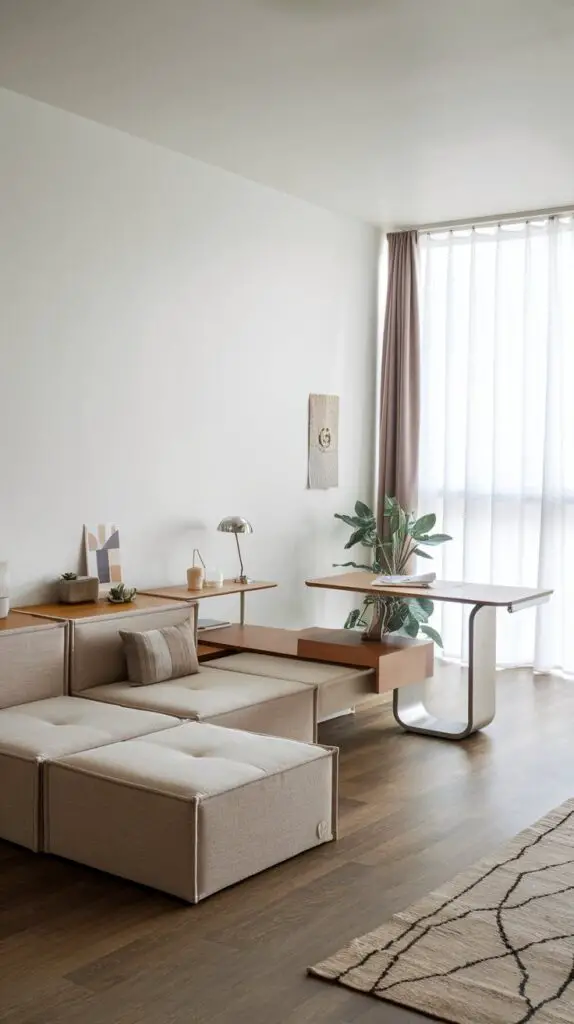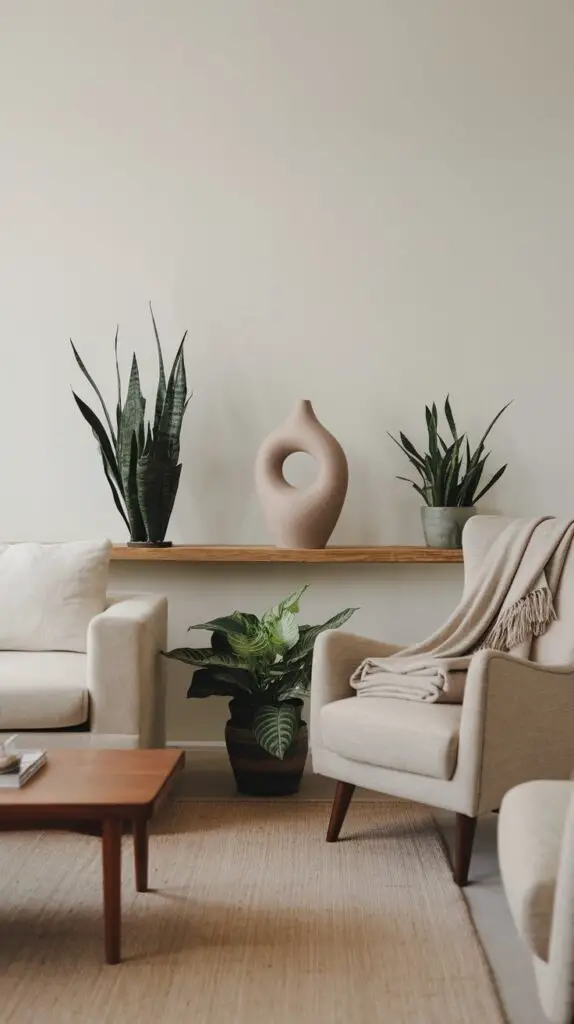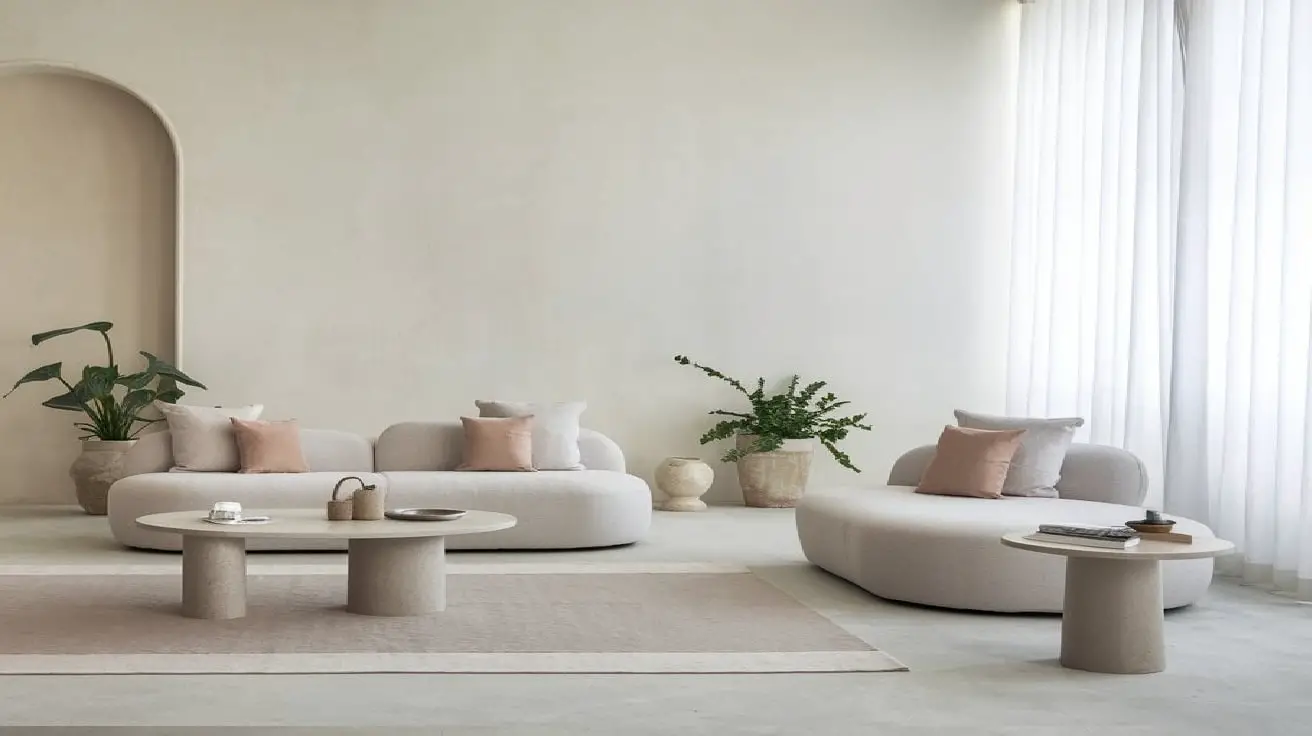Minimalist Small Living Room Inspiration for a Clutter-Free Home
Table of Contents
Introduction
A minimalist small living room is the epitome of calm, order, and simplicity. With the hustle and bustle of everyday life, many of us crave a peaceful, clutter-free sanctuary where we can unwind and recharge. But creating a serene living room in a small space can be challenging. Without the right approach, a small room can quickly feel cramped, chaotic, or overwhelming.
What if you could design a small living room that feels open, inviting, and clutter-free, yet still exudes warmth and style? That’s where minimalist design comes in. By focusing on essential elements and reducing unnecessary clutter, minimalist design maximizes space and creates a balanced, harmonious environment. Whether you’re working with a studio apartment, a cozy townhouse, or simply want to revamp your current space, this post will provide you with inspiration and practical tips for transforming your small living room into a stylish, clutter-free retreat.
In this blog post, we’ll explore minimalist living room design ideas for small spaces, providing you with key strategies, furniture tips, and decor recommendations. We’ll also delve into the philosophy behind minimalism and how to make it work in a way that complements your lifestyle and tastes.
1. Embrace a Neutral Color Palette
One of the fundamental principles of minimalist design is the use of a neutral color palette. Light, airy colors like whites, grays, and soft beiges create a sense of space and tranquility, making them ideal for small living rooms. These shades visually expand the room and keep the atmosphere light and fresh. By avoiding dark, bold colors, you can make the most of the natural light in your space and help it feel open and expansive.
When designing your minimalist living room, opt for neutral tones for your walls, furniture, and flooring. This doesn’t mean everything has to be white, though. You can introduce soft variations of neutrals, such as light taupes or warm grays, to create visual depth. Accent colors, if used, should be subtle and understated. Think soft earth tones, muted greens, or a pop of pastel for a touch of personality without overwhelming the room.
Table: Key Elements of a Neutral Color Palette for Minimalist Living Rooms
| Color | Effect on the Room |
| White | Brightens the space and creates a sense of openness |
| Soft Gray | Adds depth and sophistication without overwhelming the space |
| Beige/Taupe | Warms up the space and creates a cozy, inviting feel |
| Muted Greens/Pastels | Subtle accent colors that add interest without clashing |
2. Invest in Multi-Functional Furniture
When dealing with a small living room, every piece of furniture needs to pull its weight. One of the most effective ways to keep a small space organized and functional is by investing in multi-functional furniture. This approach minimizes clutter while still offering all the comfort and practicality you need.
Think about furniture that serves multiple purposes, such as a sofa bed, an ottoman with hidden storage, or a coffee table that doubles as a desk. Nesting tables or modular seating arrangements can be adapted to suit your needs. Multi-functional furniture allows you to maintain an open, uncluttered feel without sacrificing comfort or style.
Table: Multi-Functional Furniture Ideas for Small Living Rooms
| Furniture Piece | Function |
| Sofa Bed | Converts from a couch to a bed for guests |
| Storage Ottoman | Provides seating and hidden storage for blankets or books |
| Nesting Tables | Can be stacked or arranged for extra surface space when needed |
| Modular Sofa | Adaptable seating that can be rearranged to fit the space |

3. Maximize Vertical Space
In small living rooms, utilizing every inch of space is key to maintaining an uncluttered environment. One often-overlooked area is vertical space. By making use of the walls, you can free up valuable floor space and keep the room feeling open.
Consider installing floating shelves or wall-mounted storage units to store books, decor, or other essentials. Wall-mounted lighting fixtures, such as sconces or pendant lights, can add both functionality and style without taking up precious space. Additionally, hanging art or mirrors can draw the eye upward, making the room feel taller and more expansive.
Table: Vertical Space Solutions for a Minimalist Small Living Room
| Idea | Benefits |
| Floating Shelves | Provides storage without taking up floor space |
| Wall-Mounted Storage | Keeps essentials organized and accessible while freeing up the floor |
| Wall-Mounted Lighting | Saves space while adding light and ambiance |
| Hanging Mirrors/Art | Creates the illusion of more space by drawing the eye upward |
4. Keep Accessories Simple and Intentional
When decorating a minimalist small living room, less is more. To avoid a cluttered look, keep accessories simple and intentional. Choose a few well-selected decor items that add personality and warmth without overwhelming the space.
Instead of filling every surface with knick-knacks, focus on a few statement pieces that bring style to the room. A single sculptural vase, a cozy throw blanket, or a few well-placed plants can add texture and interest to the space. Keep colors neutral, and choose items with clean lines to maintain a cohesive, minimalist look.
Table: Simple and Intentional Accessories for Minimalist Living Rooms
| Accessory | Purpose |
| Sculptural Vases | Adds elegance and texture without cluttering the room |
| Throw Blankets | Softens the space and adds warmth while being practical |
| Indoor Plants | Brings life and a touch of nature to the room |
| Art Pieces | A single piece of wall art with clean lines or abstract shapes adds personality |

5. Open Layout with Clean Lines
In a small space, the layout of your living room plays a critical role in how the space feels. A minimalist design often incorporates an open floor plan, where furniture is arranged to create a sense of flow and openness. Keep the layout simple and avoid overcrowding the room with too many pieces of furniture.
Opt for clean lines in your furniture—straight-edged couches, sleek coffee tables, and minimalistic shelving units are all great choices. The goal is to create a sense of flow and functionality while maintaining a sense of openness. By keeping the layout spacious and uncluttered, you can ensure that your small living room feels like an airy and inviting space.
Table: Tips for a Clean and Open Layout
| Tip | Description |
| Keep Furniture Minimal | Avoid overcrowding the space with too many pieces of furniture |
| Focus on Clean Lines | Choose furniture with straight, simple lines to maintain a streamlined look |
| Arrange for Flow | Place furniture in a way that allows easy movement and maximizes open space |
| Limit Decor | Keep accessories minimal and focused to maintain an open atmosphere |
6. Use Natural Light to Enhance the Space
Natural light is one of the most important elements of minimalist design. In a small living room, the more light you can let in, the more expansive the space will feel. Avoid heavy drapes and instead opt for light, airy window treatments like sheer curtains or blinds that allow sunlight to pour into the room.
To make the most of natural light, keep windows unobstructed and place furniture strategically to enhance the light flow. Mirrors can also be used to reflect light and make the space feel brighter and larger.
Table: Natural Light Tips for Small Living Rooms
| Tip | Description |
| Choose Light Window Treatments | Sheer curtains or blinds let in more light while maintaining privacy |
| Keep Windows Unobstructed | Avoid heavy furniture near windows to allow light to fill the room |
| Use Mirrors Strategically | Place mirrors across from windows to reflect light and make the room feel larger |
| Add Reflective Surfaces | Light-colored furniture and decor can help bounce light around the room |
Conclusion
A minimalist small living room is all about creating a serene, functional space where every piece has a purpose. By embracing a neutral color palette, investing in multi-functional furniture, maximizing vertical space, and keeping accessories simple and intentional, you can create a clutter-free haven that feels open and airy. The key to minimalist design is to focus on simplicity, balance, and functionality, while maintaining a sense of style and personality. With these tips, you can transform your small living room into a peaceful, organized retreat that reflects your lifestyle and taste.

